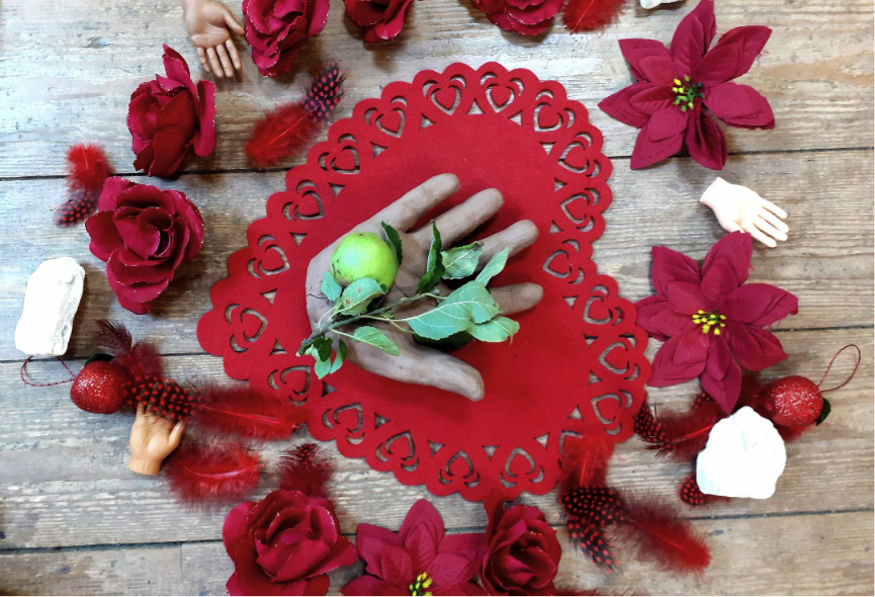Storytelling with Survivors of Domestic Violence
17 January, 2024

(Image: client installation – The Handless Maiden clay / mixed media)
Several years ago, I ran a storytelling group working with survivors of domestic violence. I took my practice of art therapy and worked with a colleague who is a drama therapist, forming a project that aimed to assist group members in reconnecting implicit (sensory) and explicit (declarative) memories of the trauma they had experienced. The goal was to support self-regulation and self-efficacy, positive attachment, and resilience-building within the group or community we created.
As Judith Herman writes, ‘Certain violations… are too terrible to utter out loud: this is the meaning of the word unspeakable. Atrocities, however, refuse to be buried’. Domestic violence is one of those atrocities that continues to plague lives and, for its survivors, is often too horrific to verbalise. Making art or using dance or drama to express implicit and explicit trauma memories allows survivors to break both the outer and the inner silence.
The stories we chose to work with initially were from Women Who Run With The Wolves, the classic book by the Jungian psychoanalyst Clarissa Pinkola Estés. We selected two stories: ‘The Handless Maiden’ and ‘The Red Shoes’. In the first, a woman loses her hands; in the second, a girl loses her feet. These are stories of cruelty, loss, violence and shame.
They are also stories full of vivid, often violent symbolism with reference to colours, nature and internal landscapes. As such, they helped the women – who were struggling with the overactivation and hyperarousal associated with post-traumatic stress – to identify and ameliorate their bodily experiences and expressions of distress.
In order for recovery to begin, the violence must be transformed in some way. Initially, we shared the traditional versions of the fairytales. These stories were a starting point and became a container for their own stories, of vast forests, royal kingdoms and dark underworlds.
Soon the women were creating their own tellings, through dance, music, poetry, visual art or their own written stories, and using their own metaphors and symbols. The group members needed to have control in how they communicated sensitive experiences, to imagine new narratives post-trauma, to find ways to explore, restructure and reframe.
Much of our work took place with the group in a physical circle, just as ancestral storytelling was often around a fire, a hearth. For me this speaks to the current drive in trauma-informed practice to reframe Dan Siegel’s ‘Window of Tolerance’ and think instead in terms of a ‘Circle of Capacity’ model. This reflects the fact that working with trauma is not just about tolerating these experiences, not just about enduring and coping, but also about expanding survivors’ capacity for curiosity, self compassion, enlivenment.
Re-reading Benjamin Zephaniah’s autobiography recently, I was struck by his childhood in the shadow of domestic violence – and his discovery, there, that poetry is power and art is activism for the voiceless. ‘Living rooms are arranged around the TV,’ he writes, ‘but when you take away the box you have the freedom to arrange the room to suit yourself’.
Storytelling helped these women trauma survivors to rearrange the room, and the narrative their bodies contained, to suit themselves. In working therapeutically with stories, we move away from being passive consumers and begin to transform the narratives of persecution and victimisation. We put ourselves at the centre of our own circle, and recognise our own creative capacities to challenge and to change.





